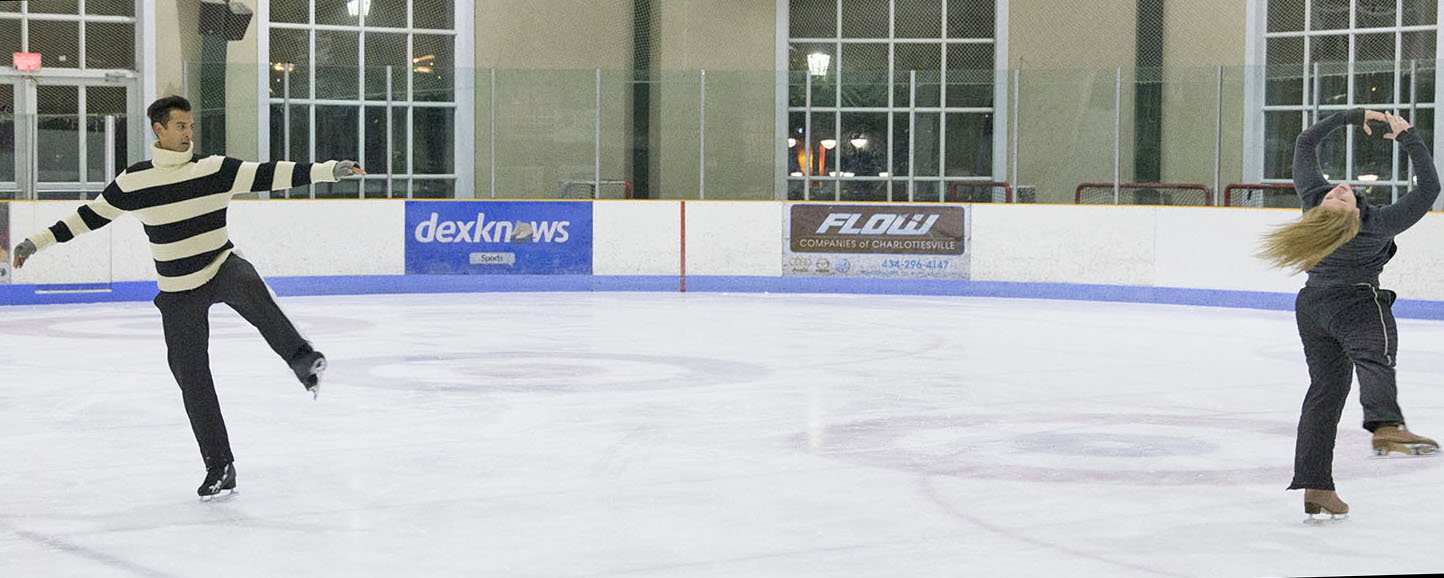There’s no shortage of academics with hidden talents at the University of Virginia. Among them are two members of the UVA community who regularly rise in the wee hours of the morning and brave frigid temperatures to share their favorite pastime with students.
Assistant professor of media studies Christopher Ali and Lindsay Slater, a second-year graduate student in the Curry School of Education, are former award-winning figure skaters, and they keep their skills sharp by co-coaching the UVA Club Figure Skating team.
“A few team members approached us for help while we were volunteering at the Main Street Arena last year,” Slater said. “Chris and I have different strengths and somewhat different styles, so it’s been really fun to work together.”
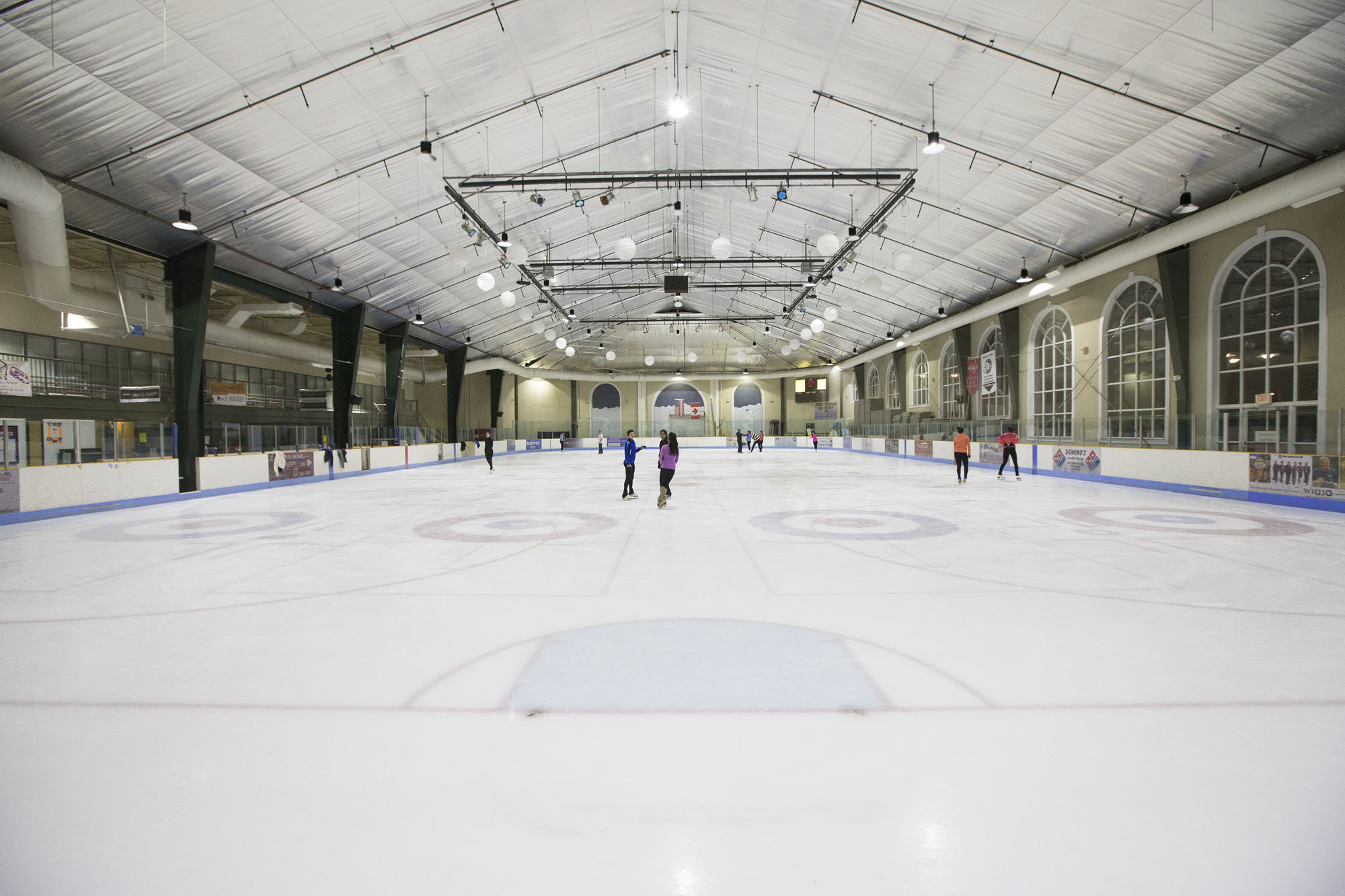
After competing in ice rinks across the United States and Canada, Christopher Ali and Lindsay Slater now call Charlottesville’s Main Street Arena home.
“Throughout my senior national career, I was never willing to sacrifice my education, so I did both full-time, full blast,” he said.
Like Ali, Slater’s skating career comingled with her education. Now a doctoral candidate in the Curry School’s Department of Kinesiology, as an undergraduate, she was a two-time national champion with the synchronized skating team at Miami University of Ohio.
“That’s how I just fell in love with the biomechanics of skating and physical activity,” she said. “Now I study the physics behind injury.”
As part of her research, Slater is working with U.S. Figure Skating – the governing body for figure skating in the United States – to create an institutional review board that will track national athletes’ performances and their injury history. Her goal is to increase sport performance, or the practice of keeping athletes healthy and preventing injury.
“In U.S. figure skating, because the sport is very image-based, in the past skaters were expected to be really small and weren’t encouraged to be in the weight room until recently,” she said.
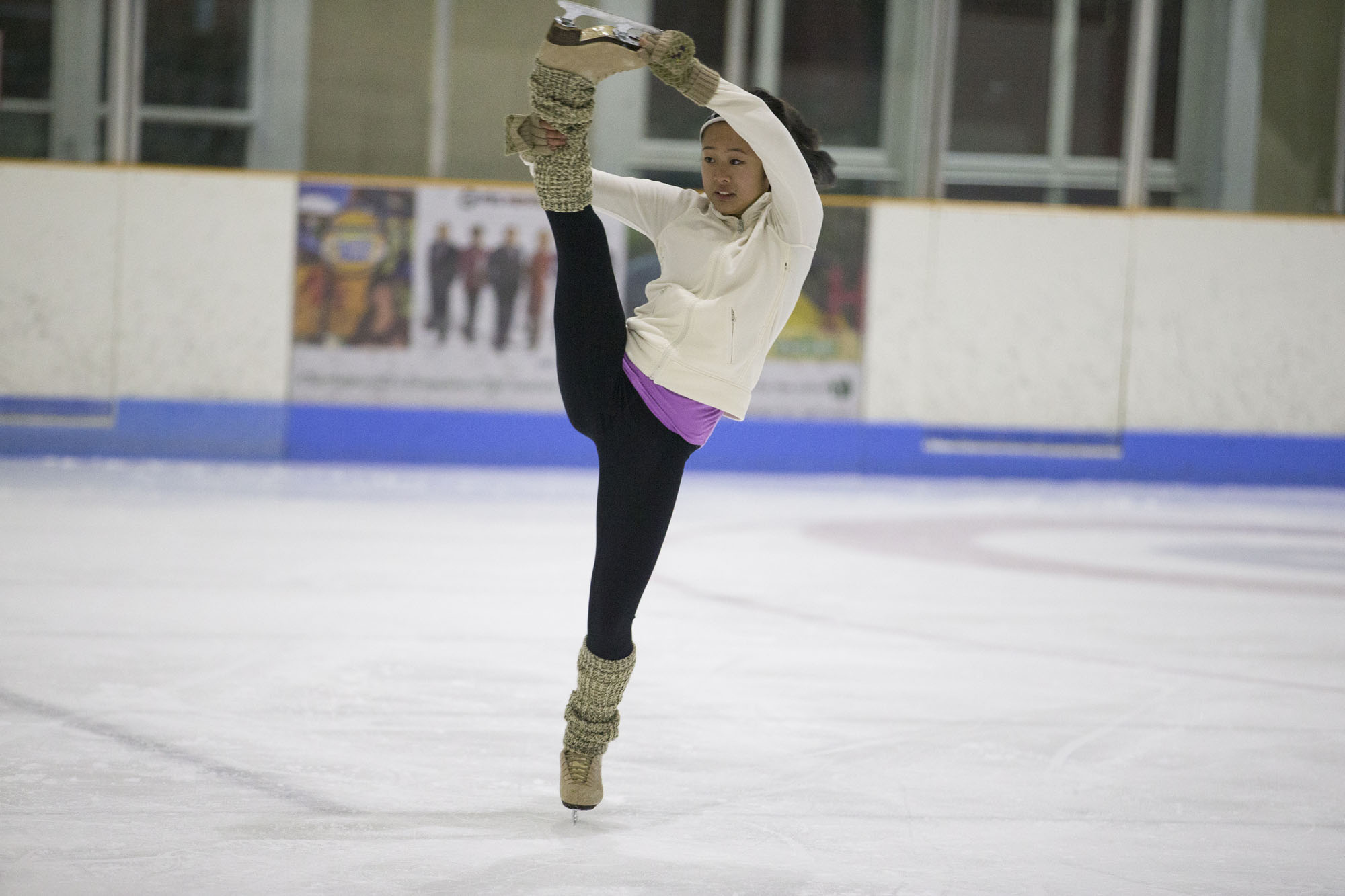
Slater works with skaters to better prepare their bodies for the many unusual bends and twists demanded by the sport. Here UVA club skater Marcha Kiatrungrit practices an upright grab spin.
Through her work with U.S. Figure Skating, Slater has access to data on current training plans and injuries. She’s using that information to develop a new training protocol at UVA and will test her findings at the U.S. Figure Skating headquarters in Colorado.
While Ali’s skating background does not apply quite as directly to his research as Slater’s – his focus is media policy and law – he said it was still crucial preparation for his academic career. In particular, he believes his performances in the rink help him in his lectures and interactions with students.
“Not only do I not have a fear of public speaking, but I love it. I relish it,” he said. “I love being in front of just 15 people, or even 300 people. It’s exactly like a skating performance, except you’re unlikely to fall down, so you don’t have to worry about 20,000 people saying ‘ooh.’”
After finishing his competitive skating career, Ali spent a few summers coaching younger athletes. He taught them not only how to be physically prepared, but also the mental skills they needed to compete.
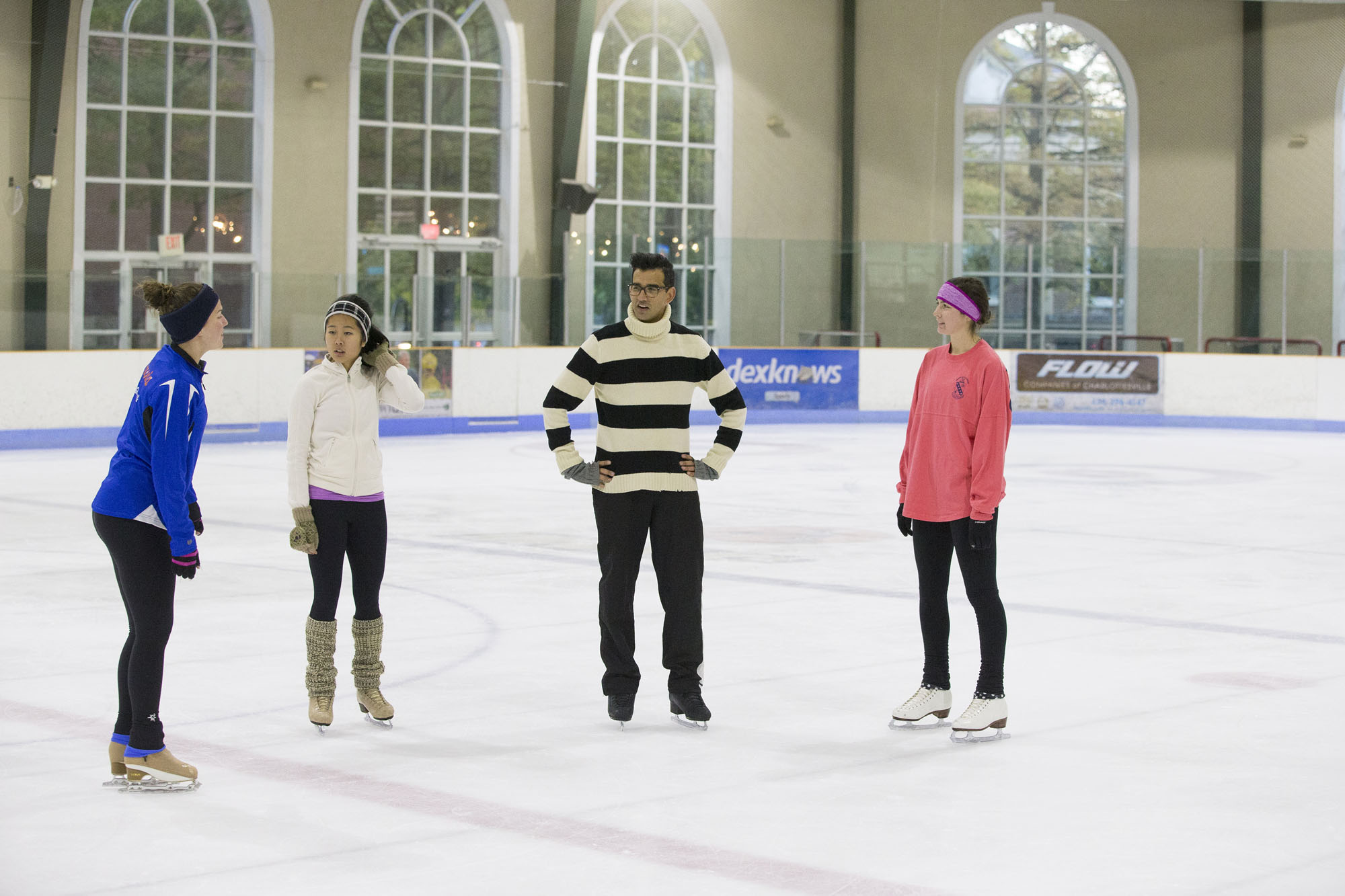
Ali speaks with members of the UVA Club Figure Skating team about routines for their upcoming competition.
Ali looks forward to passing this kind of poise on to his media studies students, particularly any graduate students that may seek his advice on teaching.
For now, Ali and Slater are focused on bringing those skills to the ice as they help the UVA Club Figure Skating team prepare for its first competition of the year.
The team is a fairly even mix of veteran skaters and students who are still working their way up from the basics.
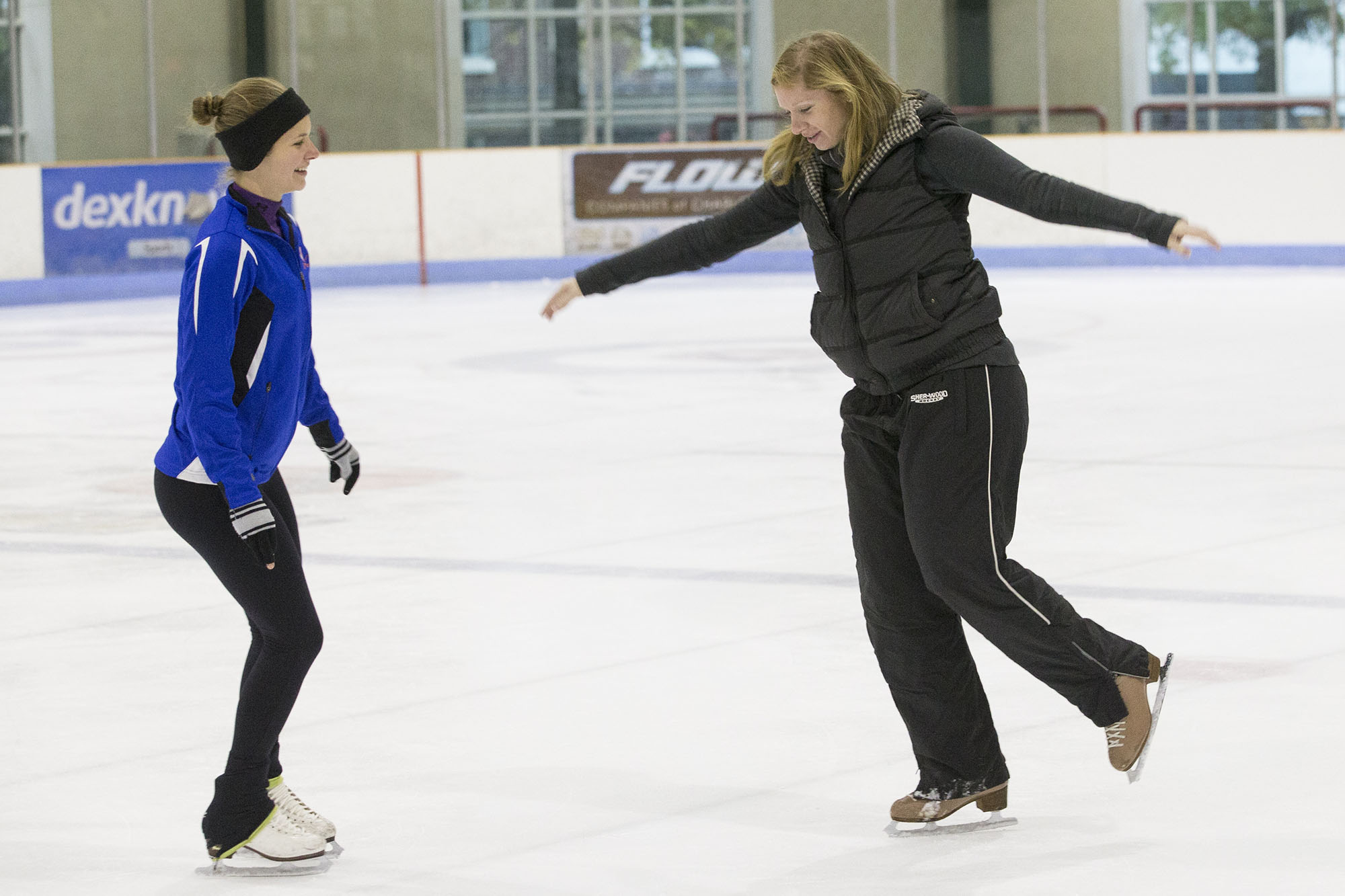
Slater helps a member of the UVA club team perfect her form.
The collegiate club circuit has two types of competition: the choreographed solo performance and a team event where five skaters each perform one particular move in an attempt to receive the highest combined score.
However the team scores in the competition, Slater and Ali are proud of the progress.
“The organization is totally student-run and they are incredible,” Ali said. “The fact that we can have practice at 5:45 in the morning is pretty impressive. Our team is really committed.”
Media Contact
Article Information
October 26, 2015
/content/hoos-ice-professor-and-graduate-student-bring-experience-and-research-rink

